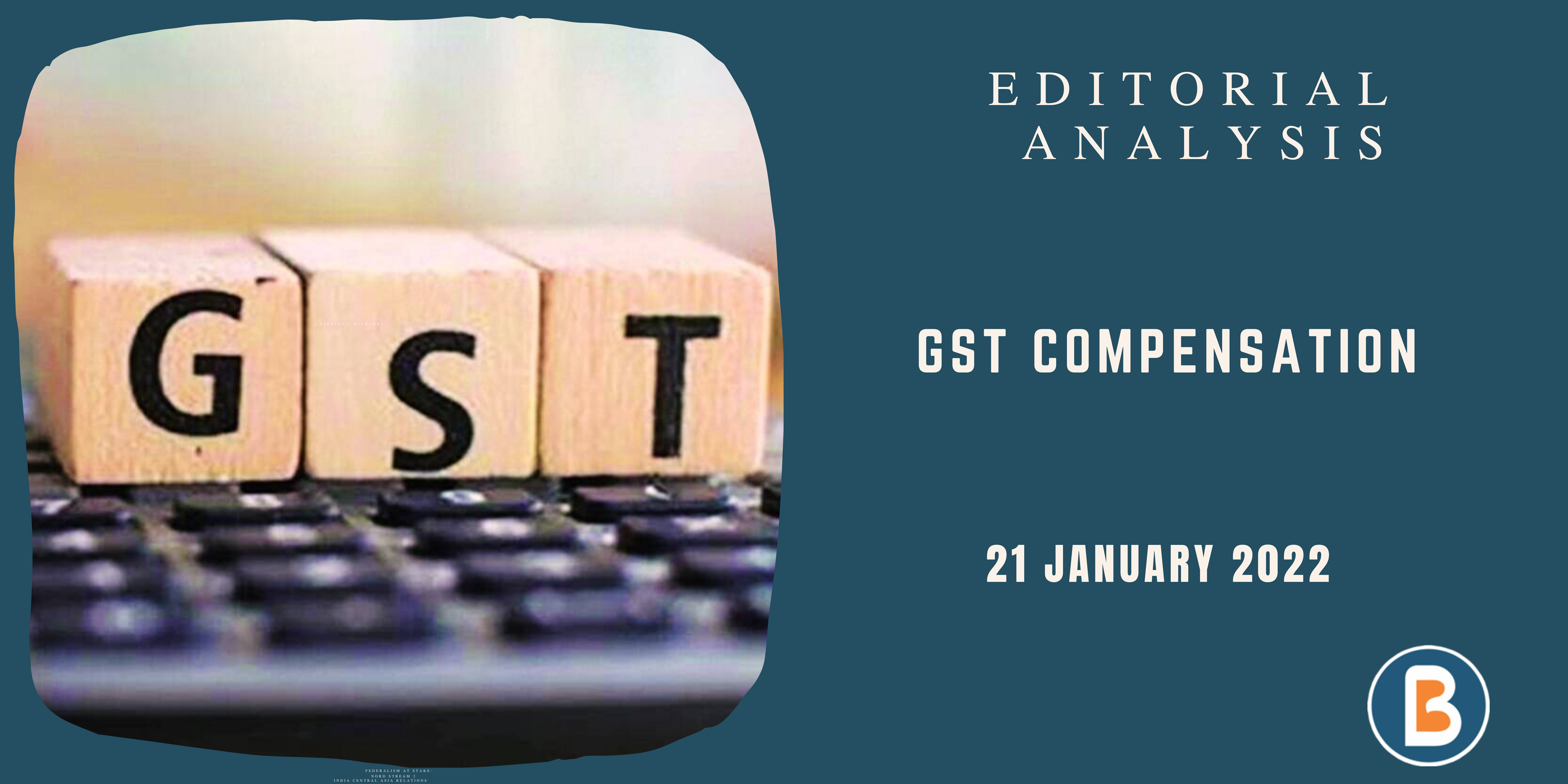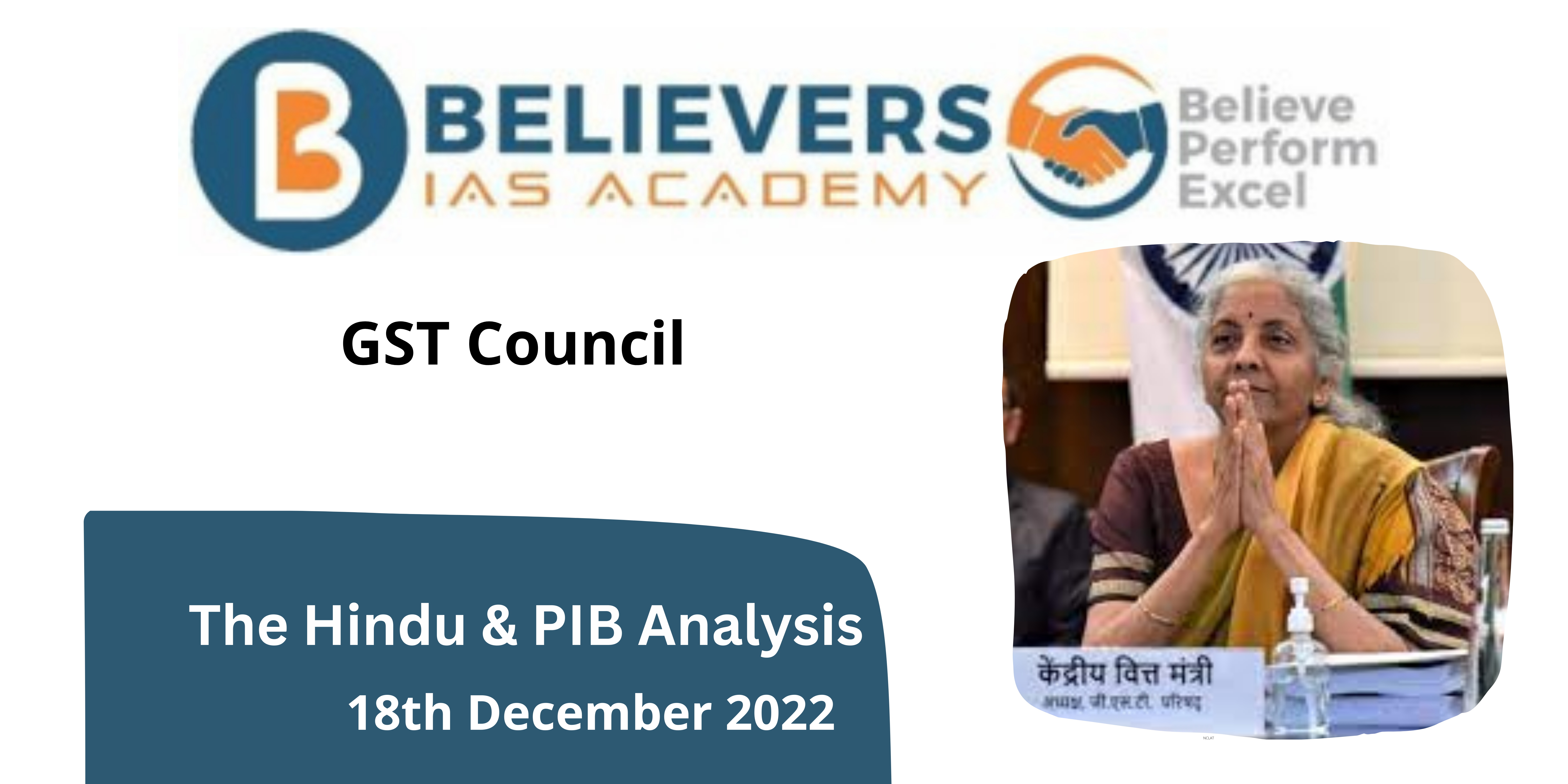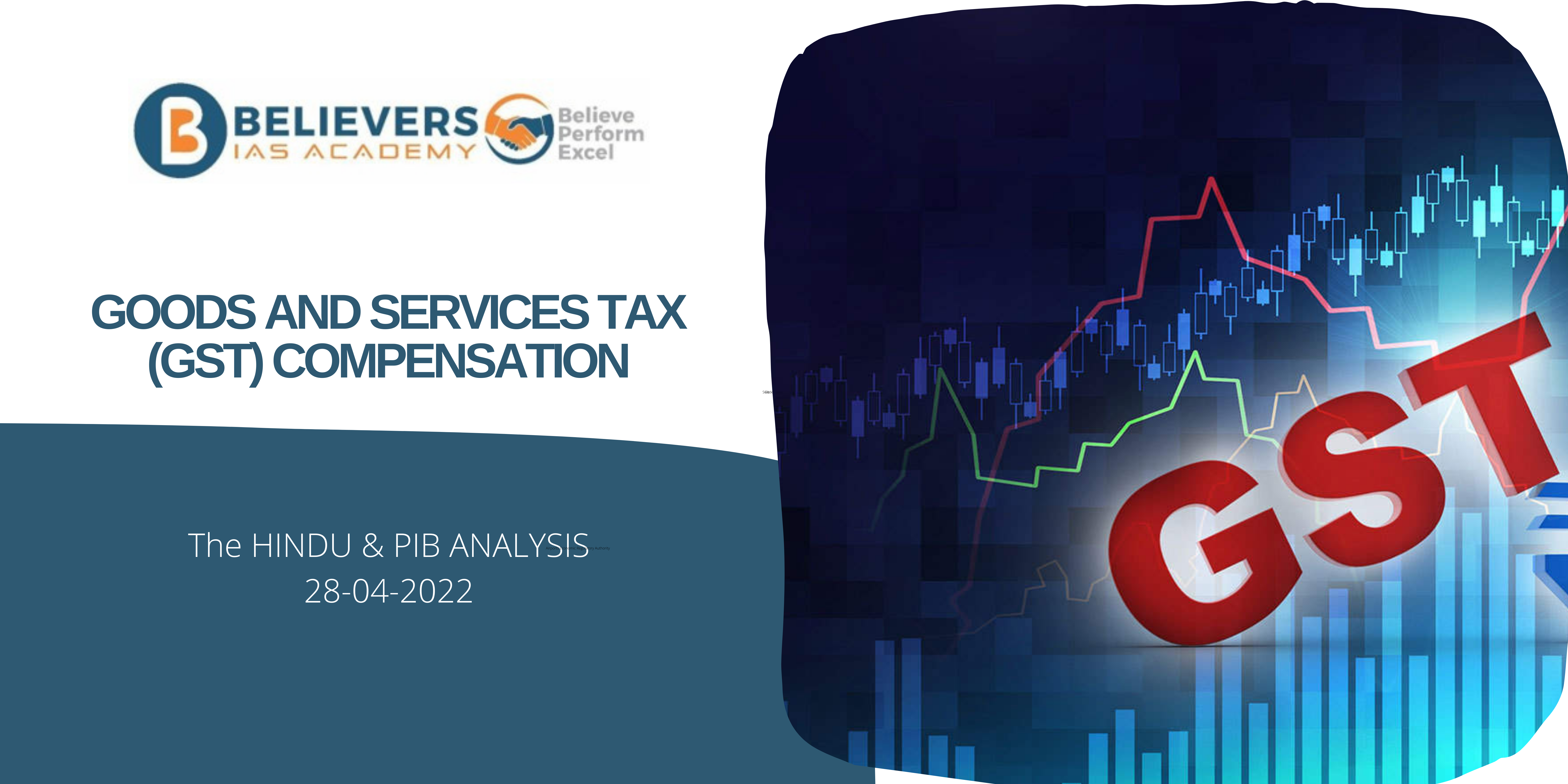GST Compensation
Introduction:
- It has been claimed that the implementation of the Goods and Services Tax(GST) in India was a grand experiment in cooperative federalism in which both the Union and the States joined hands to evolve a value-added tax on goods and services.
- Although the rate structure was presumed to be revenue neutral, the States agreed to forgo their revenue autonomy in favour of tax harmonization.
What is the GST compensation?
- The Constitution (One Hundred and First Amendment) Act, 2016, brought in GST,
- The adoption of GST was made possible by States ceding almost all their powers to impose local-level indirect taxes and agreeing to let the prevailing multiplicity of imposts be subsumed into the GST.
- This corpus in turn is funded through a compensation cess that is levied on so-called ‘demerit’ goods.
- The calculation of the shortfall is done annually by projecting a revenue assumption based on 14% compounded growth from the base year’s (2015-2016) revenue and calculating the difference between that figure and the actual GST collections in that year.
Issues Associated:
- Although it was hoped that the tax structure would stabilise in the first five years, the reform is still in transition.
- First, the technology platform could not be firmed up for a long time due to which the initially planned returns could not be filled
- This led to large-scale misuse of input tax credit using fake invoices. The adverse impact on revenue collections due to this was compounded by the pandemic-induced lockdowns.
- Second, this is the only major source of revenue for the States and considering their increased spending commitments to protect the lives and livelihoods of people, they would like to mitigate revenue uncertainty to the extent they
- Finance Commission which is supposed to take into account the States’ capacities and provide its recommendations has already submitted its recommendations; the next Commission’s recommendations will be available only in 2026-27.
Conflict between Centre and the States:
- In 2018-19, the shortfall in the payment requirement from the cess collections was Rs.24,947 crore which could be met from the surpluses of the previous two years kept as balance in the compensation fund.
- However, in 2020-21, due to the most severe lockdown following the novel coronavirus pandemic, the loss of revenue to States was estimated at Rs.3 lakh-crore of which Rs.65,000 crore was expected to accrue from the compensation cess.
- Of the remaining Rs.2.35 lakh-crore, the Union government decided to pay Rs.1.1 lakh-crore by borrowing from the Reserve Bank of India under a special window and the interest and repayment were to be paid from the collections from compensation cess in the future.
- However, the entire compensation payment episode plunged the Union-State relationship to a new low.
- The agreement to pay compensation for the loss of revenue was for a period of five years which will come to an end by June 2022 and considering the uncertainty in revenue collections faced by the States, they are keen that the compensation scheme should continue for another five years.
GST structure requires significant reforms.
- Notably, almost 50% of the consumption items included in the consumer price index are in the exemption list; broadening the base of the tax requires significant pruning of these items.
- Second, sooner or later, it is necessary to bring petroleum products, real estate, alcohol for human consumption and electricity into the GST fold.
- Third, the present structure is far too complicated with four main rates (5%, 12%, 18% and 28%).
- This is in addition to special rates on precious and semi-precious stones and metals and cess on ‘demerit’ and luxury items at rates varying from 15% to 96% of the tax rate applicable which have complicated the tax enormously.
- Multiple rates complicate the tax system, cause administrative and compliance problems, create inverted duty structure and lead to classification disputes.
Source: THE HINDU.




